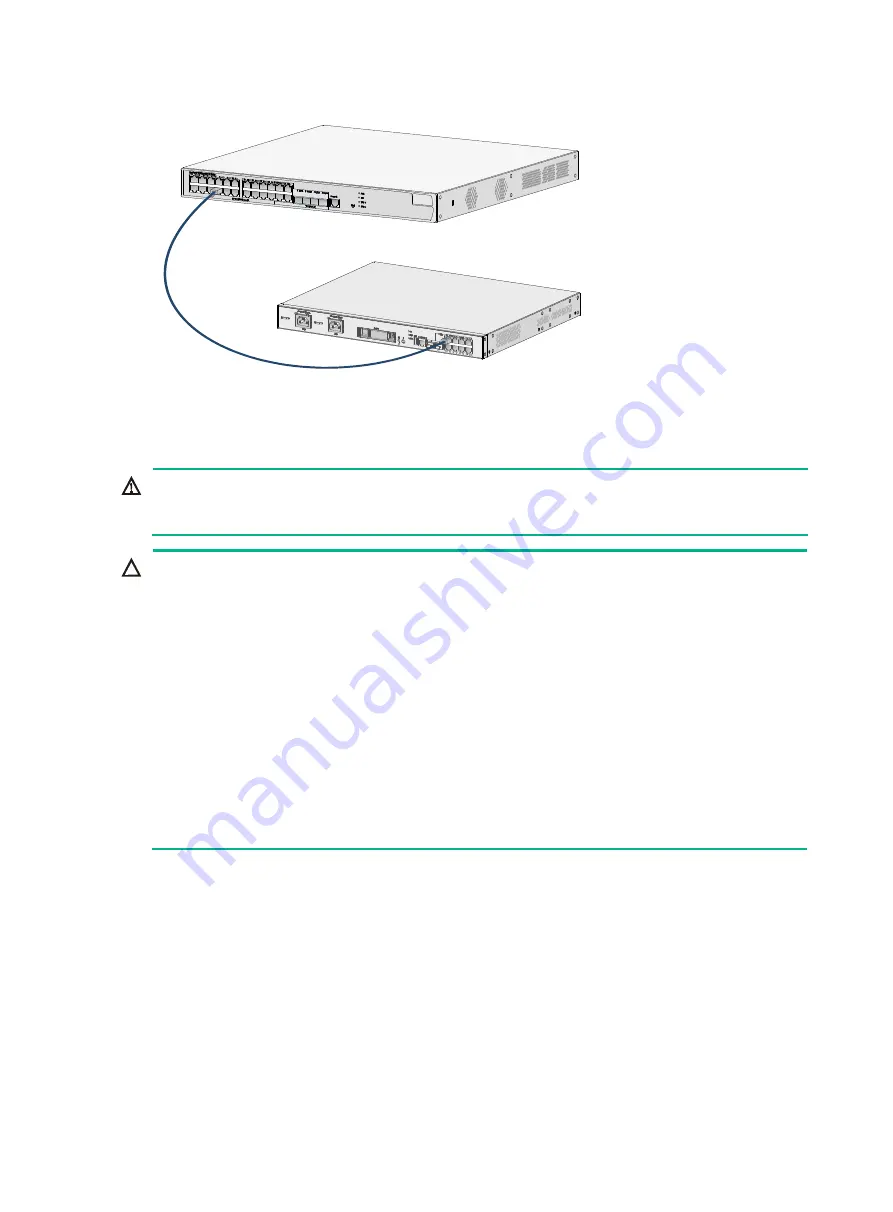
15
Figure 12 Connecting a copper port
Connecting an Ethernet fiber port
WARNING!
Disconnected optical fibers or transceiver modules might emit invisible laser light. Do not stare into
beams or view directly with optical instruments when the switch is operating.
CAUTION:
•
Never bend an optical fiber excessively. The bend radius of an optical fiber must be not less than
100 mm (3.94 in).
•
Keep the fiber end clean.
•
To connect a fiber port by using an optical fiber, first install a transceiver module in the port and
then connect the optical fiber to the transceiver module.
•
Before connecting a fiber to a transceiver module, make sure the fiber connector type is as
required by the transceiver module.
•
To avoid transceiver module damage, make sure the receiving optical power of the device does
not exceed the upper threshold of the transceiver module before connecting a fiber.
•
Insert a dust cap into any open optical fiber connector and a dust plug into any open fiber port or
transceiver module port to protect them from contamination and ESD damage.
•
Make sure the Tx and Rx ports on a transceiver module are connected to the Rx and Tx ports on
the peer end, respectively.
To connect an optical fiber for a fiber port:
1.
Remove the dust plug from the fiber port.
2.
Rotate upward the bail latch until it catches the knob on the top of the transceiver module.
Remove the dust cap from the module, and then insert the module slowly into the port.
3.
Remove the dust cap from the fiber connectors on the optical fiber, and use air-laid paper with
anhydrous alcohol to wipe clean the fiber connectors.
4.
Identify the Rx and Tx ports on the transceiver module. Use the optical fiber to connect the Rx
port and Tx port on the transceiver module to the Tx port and Rx port on the peer end,
respectively.






























